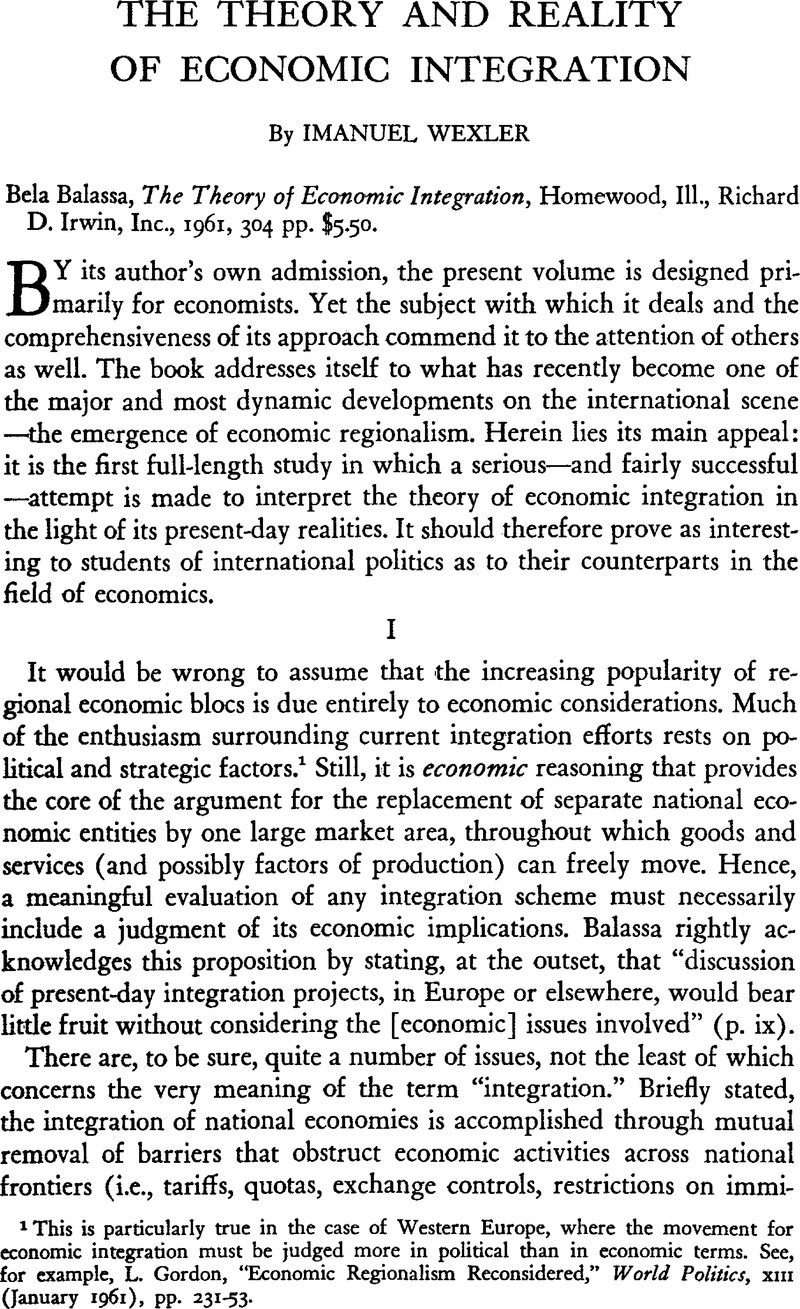No CrossRef data available.
Article contents
The Theory and Reality of Economic Integration
Review products
Published online by Cambridge University Press: 18 July 2011
Abstract

- Type
- Review Articles
- Information
- Copyright
- Copyright © Trustees of Princeton University 1962
References
1 is particularly true in the case of Western Europe, where the movement for economic integration must be judged more in political than in economic terms. See, for example, Gordon, L., “Economic Regionalism Reconsidered,” World Politics, XIII (January 1961), pp. 231–53.CrossRefGoogle Scholar
2 Of all forms of integration, customs unions have received the greatest attention in the theoretical literature.
3 See Lipsey, R. G., “The Theory of Customs Unions: A General Survey,” Economic Journal, LXX (September 1960), p. 496.CrossRefGoogle Scholar
4 It should be remembered, however, that the discussion here is carried out within a static framework.
5 Similar views concerning the economic outcome of the EFTA are shared by other writers. For examples, see Kreinin, M. E., “The ‘Outer Seven’ and European Integration,” American Economic Review, L (June 1960), pp. 370–86Google Scholar; and, more recently, Egerer, G., “Toward a United States of Western Europe,” Quarterly Review of Economics and Business, 1 (August 1961), pp. 77–85.Google Scholar
6 This is a summary quotation. It reflects references to specific effects, which may be found on pp. 33–34, 38, 43, 53–54, and 60 of the book.
7 For one thing, the chances for trade-diversion are greater in a customs union than in a free-trade area.
8 Efficiency of resource allocation is the major—and often the sole–criterion that static analysis applies in assessing the performance of any integration scheme.
9 A fifth type should be mentioned—commercial policy. However, its co-ordination, except in the case of a free-trade area, simply involves the maintenance of a uniform tariff and trade policy against non-union members.
10 An interesting combination—a supra-national authority and a system of flexible exchange rates—has also been suggested. See Meade, J. E., “The Balance-of-Payments Problems of a European Free-Trade Area,” Economic Journal, LXVII (September 1957), pp. 379–96.CrossRefGoogle Scholar
11 And if the union-members are committed to maintain fixed exchange rates, and their currencies are freely convertible into each other, there is really no need for a common currency.
12 This is not to deny, however, the political difficulties inherent in any attempt aimed at a unification of economic institutions.


